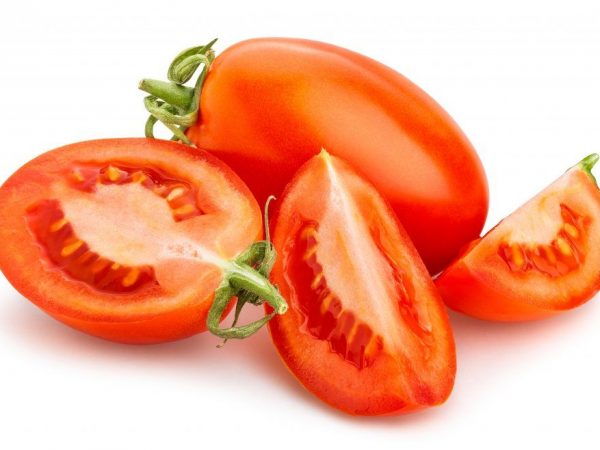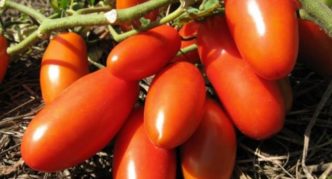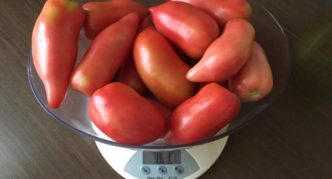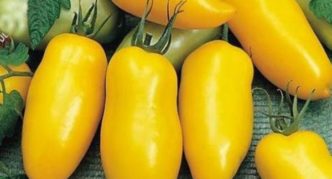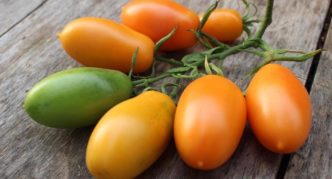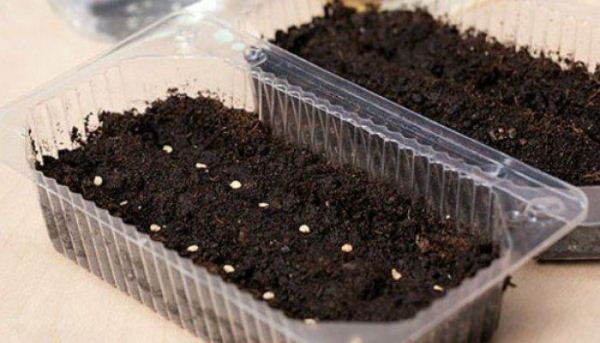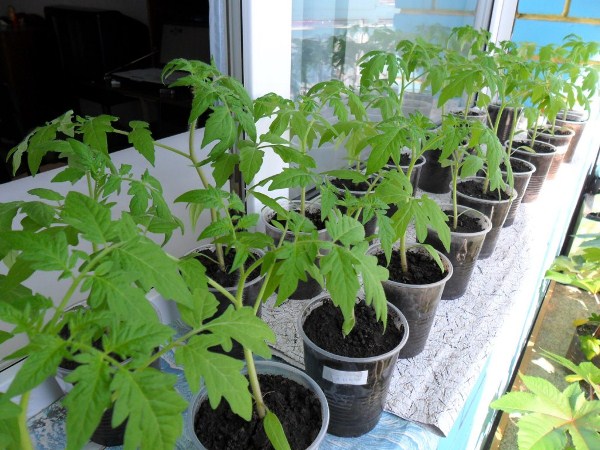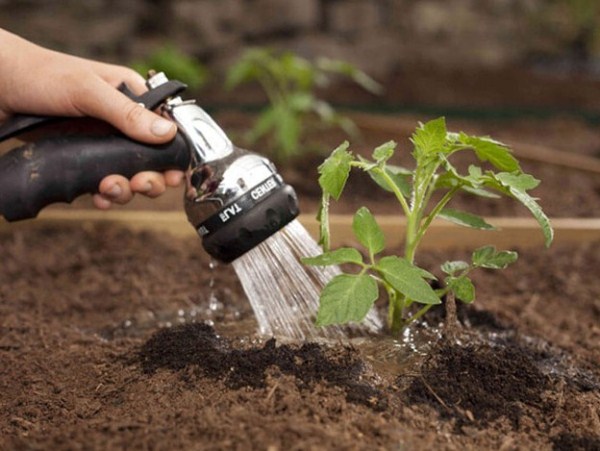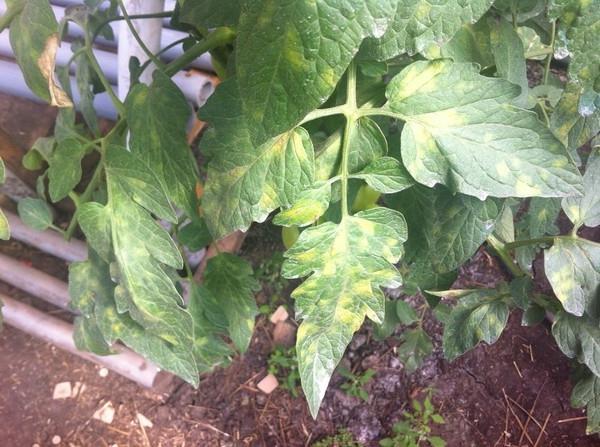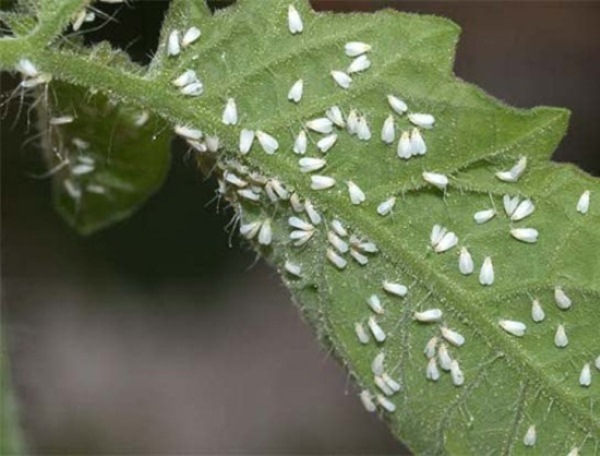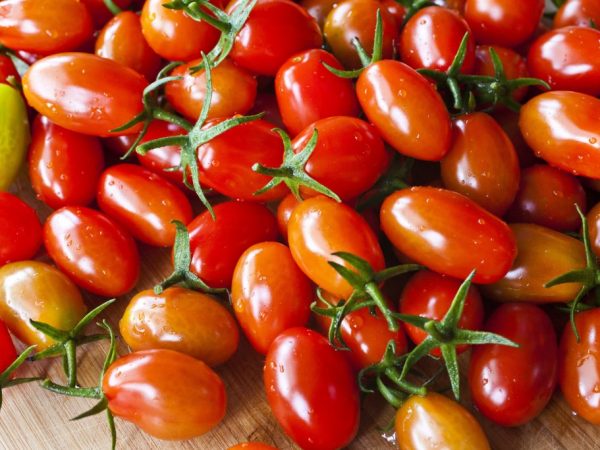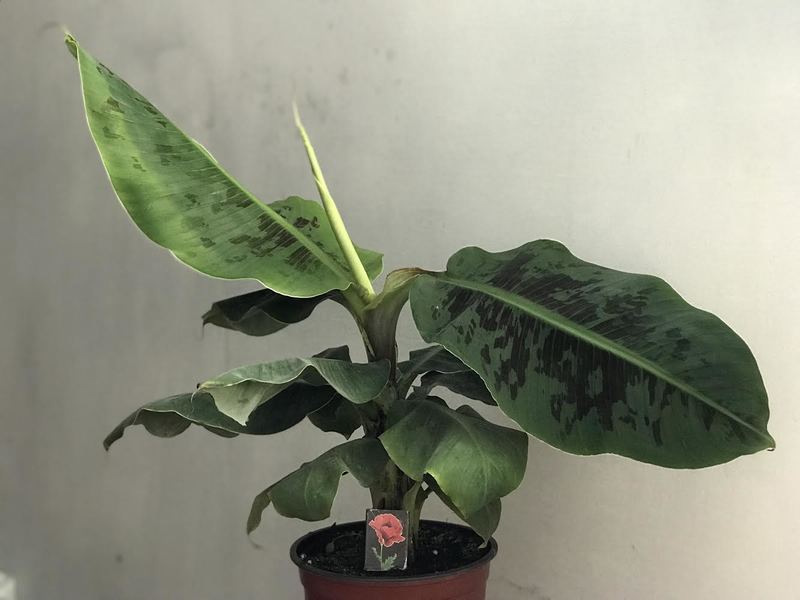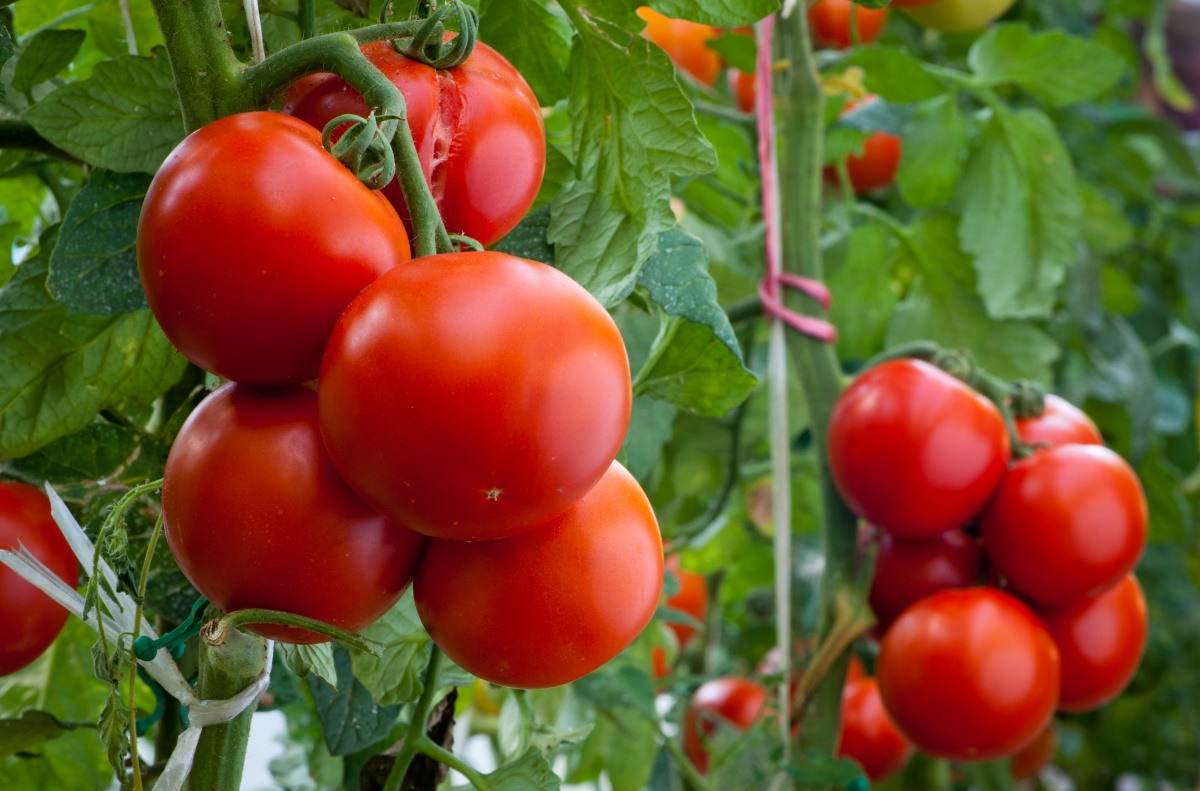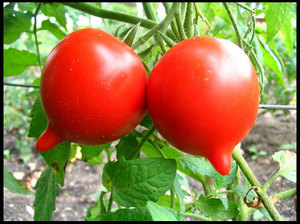The Banana tomato variety appeared not so long ago, but has already gained popularity among gardeners. This is ideal for growing in regions of the middle lane. The variety bears fruit stably both in open ground and in greenhouses, which is due to its unpretentiousness in care. There are several varieties of the Banana variety, differing in color.
Content
Description of the variety and its features
The banana tomato is of several types:
- red;
- golden;
- Orange;
- pink.
All of them are identical in most characteristics and agronomic requirements, with the exception of fruit color. However, red tomatoes became the favorite.
The variety belongs to the early maturing varieties and begins to bear fruit after 90-100 days outdoors and 85-90 days in the greenhouse, after the first shoots appear... The bushes are usually short, but can stretch up to a meter in height. Up to 12 large fruits are tied on one hand.
Fruit characteristics:
- oblong shape with a rounding at the end (outwardly they resemble plums);
- dense and fleshy inside;
- the skin is dense, the flesh is sweetish;
- uniform color;
- the weight of one fruit is 50–100 grams.
The variety is distinguished by its increased resistance to heat and drought, as well as to a short-term cold snap. The quality of fruiting is not affected by weather conditions. The first ovary is formed above the eighth leaf, the rest are distributed above the stem with an interval of 1–2 leaves. According to gardeners' reviews, Banana tomatoes are not very susceptible to late blight.
Another characteristic feature of the variety is its friendly and intense flowering. Moreover, all flowers form ovaries. As a result, this gives a bountiful harvest of fruits of the same size, which is convenient in terms of harvesting - you do not have to stretch the conservation.
Photo: varieties of varieties Banana red, yellow or orange
- Most loved by gardeners
- Externally, it can be confused with unripe red tomatoes
- This species is also called "golden"
- As tasty as other varieties
Video: description and characteristics of tomatoes Banana red
Advantages and disadvantages of the variety
Like any crop, tomatoes of this variety have their advantages and disadvantages. The first are:
- almost 100% germination of planted seeds;
- fast adaptation of plants to a new place after transplanting;
- simultaneous flowering;
- ripe fruits differ little in size and shape;
- high resistance to most diseases of nightshade crops;
- resistance to negative weather conditions.
In the minuses, you can write down the freshish taste of the fruits, as well as their dryness. Therefore, these tomatoes are not suitable for making tomato juice..
Landing features
Even damage to the stems does not interfere with the rooting of the plant and its further development.Despite this, certain rules should be adhered to in the early stages of cultivation in order to reap a decent harvest later.
An ideal site for planting tomatoes in the country. Banana will be the one where melons, carrots, cabbage (white, cauliflower), and cucumbers previously grew.
Timing
It is permissible to plant tomatoes directly on the street, but it is recommended to pre-prepare the seedlings. Seeds are usually sown from late February to mid-March, which is affected by territoriality. The seedlings are ready for transplantation into open ground at the age of 65 days, when up to 6 true leaves are formed on them... If at the time of relocation of the seedlings the risk of recurrent night frosts still exists, then it is necessary to stretch a plastic film on top.
Preparation of planting material
To protect crops from fungal infection and death, gardeners should first soak the seeds in a manganese or fungicidal solution for 20 minutes. Such an agrotechnical technique is necessary, since the first time after planting, the culture stays mainly in a humid environment that favors the development of fungi. And thanks to pre-sowing treatment, the plant initially develops strong immunity.
Requirements for soil and containers
For tomatoes, it is preferable to select loose and fertile soil. The best option would be a ready-made soil specially designed for growing tomatoes and peppers. Additionally, it is recommended to bake it in the oven for disinfection. Wooden boxes or special peat-humus pots are taken as planting containers for seedlings.
Sowing and further growing seedlings
For sowing, holes are prepared with a depth of no more than 2 cm, otherwise the seedlings will have to wait a long time. After completing the procedure, the seedlings are abundantly watered and covered with glass or stretched with a film. Now it is important to create optimal conditions for seed germination:
- good illumination, but not in the sun;
- the duration of daylight hours is 12-13 hours (if necessary, equip artificial lighting with lamps);
- temperature regime within + 20-25 ᵒС;
- moderate humidity.
Further care involves regular watering as the soil dries up and daily raising the glass for ventilation.
When watering, it is important not to create swampiness, which will inevitably lead to the development of pathogenic fungi in the soil. Drought also adversely affects seedlings.
The first shoots hatch within a week after sowing. They start picking as soon as 2-3 true leaves are formed on them. Carefully dig out the seedlings separately so as not to damage them, and transplant them into separate containers or peat modules.
If it is decided to plant the seeds immediately in open ground, then they do it in mid-May. The landing procedure is as follows:
- Dig holes up to 2 cm deep at a distance of 40-50 cm from each other.
- Pour into each warm water (about half a glass) or potassium permanganate solution.
- Place several seeds (2-3 pcs. - for one sprout, 4-5 pcs. - if 2 sprouts are left) in the recess and buried.
- Water the seedlings again.
- Cover the planting with glass or plastic caps (cans, cut bottles).
- They arrange a semblance of a greenhouse: they install supports around the perimeter of the beds and stretch polyethylene on them, press them to the ground with stones on the sides.
Landing in open ground
Seedlings are ready for relocation to an open bed if they meet certain requirements:
- age - 45-60 days;
- height - no more than 30 cm;
- healthy appearance;
- strong shoots;
- developed root system;
- lack of swelling and signs of damage on leaves and shoots (dark spots).
Seedlings are hardened 2 weeks before transplanting to a permanent place of growth - they are brought out to the balcony or garden for 15 minutes, then the time is gradually increased.The landing site is selected sunny, but with protection from the draft Tasha, and why for the second text I have not credited.
It is recommended to prepare a plot for planting tomatoes in the fall by digging to a depth of 25 cm. At the same time, ash is added - 1.5 kg, superphosphate - 50 g and potassium salt - 20 g per square. In spring plowing, rotted bird droppings or humus are added - 1 kg per 1 sq. m. The bushes are planted according to the scheme - 4 pcs. for 1 sq. m.
Culture care
Further care for banana tomatoes consists of the following activities:
- watered daily in the morning and evening (while avoiding droplets on the leaves);
- regularly weed and remove weeds;
- fertilized once every 2 weeks, using complex formulations (according to dosages, they are guided by the instructions);
- once a month, the bushes are treated with fungicides to prevent fungal diseases;
- if necessary, tie up strongly elongated bushes to the support (do not squeeze the stem strongly with a rope, otherwise you can not wait for fruiting).
Bushes need periodic pinching. Usually the plant is pinched just above 3 or 4 flower ovaries. It is preferable to grow this variety in 2-3 trunks. To achieve this, it is necessary to tie the lower stepsons to the support.
Diseases and pests
The variety is resistant to many diseases, but it also tends to react to gardeners' mistakes in the care and adverse weather conditions. Despite the fact that tomatoes practically do not get sick with TMV (tobacco mosaic virus, which often infects plants from the category of nightshade) and fusarium, cladosporium is a danger.
Cladosporium is a fungal disease manifested by the appearance of brown spots on the outside of the leaves and a grayish bloom on the back. Gradually the foliage dries up and dies off. The reason for this is excessive humidity. To avoid being affected by this disease, you should adhere to the rules for crop rotation and care. If the summer is rainy, then to reduce the risk of morbidity, it is recommended to spray the plants with saline or Fitosporin during the growing season. In case of defeat, the bushes are treated with copper-containing preparations or folk remedies (garlic infusion, iodine solution).
The standard rates for the introduction of universal antifungal agents are 2 liters per 10 sq. m. Preventive spraying of tomatoes is best done shortly before the formation of fruit ovaries. At the slightest symptoms of the disease, it is necessary to immediately proceed with the fungicidal treatment of the bushes. It is recommended to carry out the procedure 2-3 times with an interval of 10-12 days.
Tomatoes of this variety are often attacked by the whitefly. Insecticides "Commander" and "Iskra" will help to get rid of the insect. The dosage and method of use can be specified on the package.
Harvesting
Tomatoes are harvested as they ripen - usually at the same time. With good care, up to 3 kg of vegetables are removed from one bush... The crop must be harvested before the onset of the first cold snap (when the temperature drops to + 5 установленияС) and the establishment of rainy weather.
When picking, do not ignore the tomatoes that have just begun to pour, as they quickly ripen in the sun. The fruits are plucked with a stalk, which prolongs the shelf life of vegetables. They are stored in rows in wooden containers. Then the boxes are transferred to a cool room (cellar, basement). The shelf life is usually limited to two to three months. During this period, it is necessary to have time to process the crop. The Banana variety is ideal for pickling, pickling and fresh consumption.
The fruits, due to their dense structure and elastic peel, calmly tolerate long-term transportation and do not lose their marketable qualities.
The banana tomato is loved by many gardeners due to its resistance to diseases and bad weather. Although not suitable for the production of tomato juice, it is ideal for canning and fresh salads. And even a beginner can cope with the cultivation of such tomatoes, since the culture is unpretentious.
